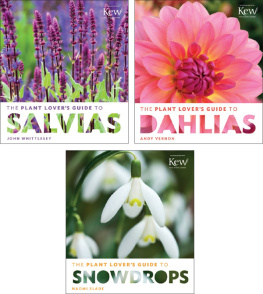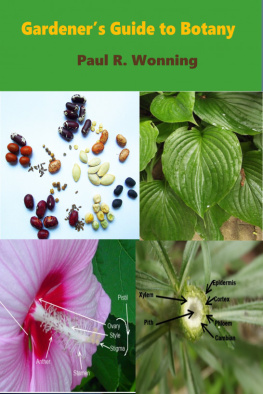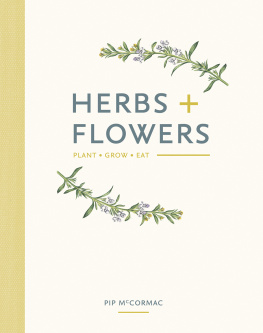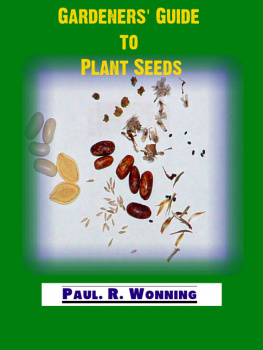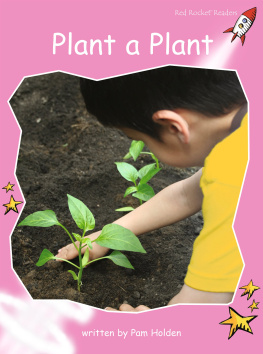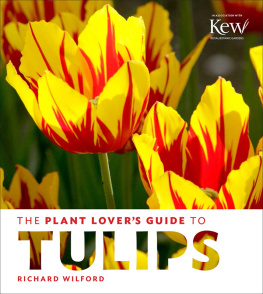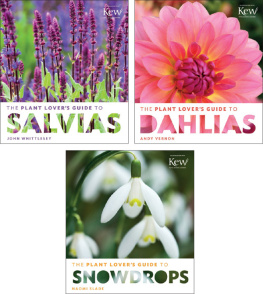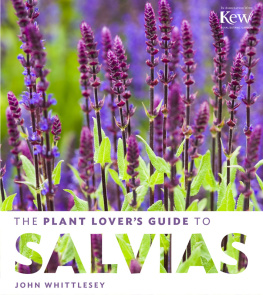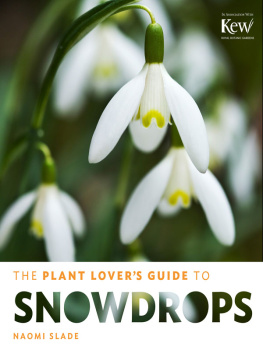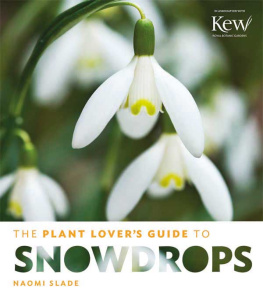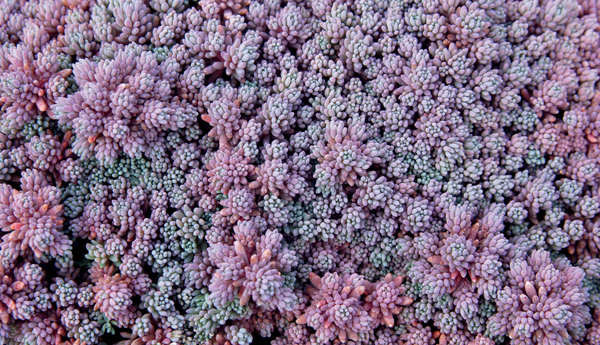
THE PLANT LOVERS GUIDE TO
SEDUMS
BRENT HORVATH
TIMBER PRESS
PORTLAND LONDON
CONTENTS
WHY I LOVE SEDUMS
I grew up in the nursery business and continue to work in it today, and throughout my career, I have come to admire sedums more and more. They are so easy to grow, so varied, and so gorgeous.
In autumn, the rich, earthy colors of the seasonrussets, golds, and buffssignal cooling temperatures and the winding down of the gardening year. Many people grow Autumn Joy Hylotelephium Herbstfreude, the classic perennial sedum, and enjoy its season-long metamorphosis of hue. The flowerheads of soft raspberry pink deepen to garnet as fall approaches. Whats more, in all but the harshest climates, this tenacious plant continues to delight through the winter months as its flowerheads turn copper, then bronze.
Something of a sedum poster child, Herbstfreude may be the most familiar but is by no means the only worthy example of this broad group. It has many charming cousins.
Of the literally hundreds of different sedums, tall and small, the majority are as easy to grow as Herbstfreude, asking little more than a sunny spot in well-drained soil. Because sedums are technically succulents, they can survive drought and forgive neglect, thanks to their juicy, moisture-retaining leaves and tough root systems. Unlike their relatives the jade plant (Crassula) and cacti, many sedums are hardy in USDA Zones 5 to 9. If you live in a region where sedums cannot withstand winter outdoors, you can always enjoy them in containers and bring them indoors for the cold months, or take cuttings and start over the following spring.
If you dont have any sedums in your garden yet, start small. Pick one or more for a pot or for your garden. I highly recommend Christmas cheer (Sedumrubrotinctum) for a container. This trusty plant will brighten a window for the winter, cheerfully color up in spring, enjoy the heat of summer, and hunker down with you in the fall.
Getting to know sedums has been an adventure for me. There are so many species, from all over the world. Some hail from the steppes and lower mountain slopes of eastern Asia and Europe, others come to us from settings as diverse as Japanese islands and Rocky Mountain outcroppings. Because gardeners have appreciated these plants for a long time, there are plenty of worthwhile selections, hybrids, and variations, and new ones are continuing to enter the trade every year.
The last definitive book on the group, Sedum: Cultivated Stonecrops, by Ray Stephenson, was published in 1994. A lot has changed since then. Not only have many more plants and variations come on the scene, but botanical research has entered a new realm whereby plants are now being classified and reclassified according to DNA-based information. As botanists have been working to sort out and catalog the diversity in sedums, there has been a lot of reorganization and some confusion persists. Briefly, many stonecrops remain in the genus Sedum, although some have been reclassified into other genera, notably Petrosedum and Phedimus. Most if not all of the border types are now placed in a separate genus Hylotelephium. Please dont let such details daunt you or deter you from exploring these plants or tracking down ones that you really want. No matter what theyre called, they are all related and often marvelous.
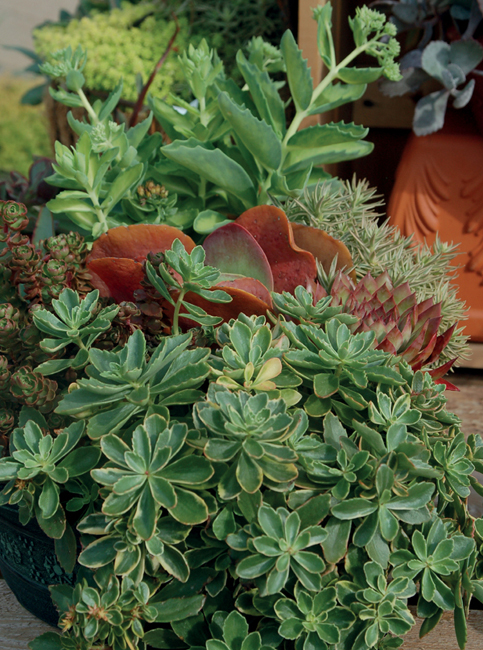
Sedums make perfect container plants. Even if you dont have a garden, you can still enjoy them.
Whether you favor the handsome border sedums with their surprising variety of flower and foliage colors, or you prefer the low-growing groundcover sedums, there are plenty of plants to capture your imagination and enhance your gardennot just in autumn, but throughout the gardening year.
Border Beauties
The taller, upright-growing sedums, now in genus Hylotelephium, grow more or less erect and have dense, domed flowerheads composed of many tiny starry flowers, much like a colorful broccoli head. Foliage is thick, fleshy, and succulent and runs from sage green to blue to dark red in color.
Most border sedums come to life in spring with light green leafy buds that eventually open to white, pink, or red flowers in late summer to early fall. In summer, they are a popular stage for butterflies (avid butterfly gardeners include sedums on their lists of desirable plants, particularly the autumn-blooming border types), and bees often visit as well. As the weather cools, the flowerhead colors grow richer and deeper. If your winters are not too harsh, these sedums remain standing for months longer stilltheir broad forms contrasting with the faded foliage of nearby plants or perhaps gathering a jaunty cap of snow atop their dried flowerheads.
Some plants are tall, up to 2 feet (60 cm), and can hold their own in a mixed border. Recent years have seen the introduction of some intriguing shorter ones. The so-called cloud sedums are not only a foot (30 cm) tall and stockier, but also extra-floriferous as well. The Desert series, which includes Black, Blonde, and Red, is even shorter, coming in under a foot (30 cm) tall. These introductions suggest new uses.
In general, the border sedums thrive in the company of other plants because they are undemanding and not aggressive. Many gardeners include them among late-season bloomers like asters, ornamental goldenrods, and boltonias, where their broad flowerheads contribute harmonizing or contrasting color. Theyre terrific with ornamental grasses, which also come into their own in the fall.
There are hundreds of Hylotelephium cultivars and hybrids, and more coming out each year. In this book, I have included about two dozen of the ones I think are the best or most representative.
Groundcovering Sedums
These little charmers, collectively known as stonecrops, usually remain under 46 inches (1015 cm) tall as they creep, spread, and sprawl. You might be surprised to learn that they are so closely related to the border types, given their small stature, but in many respects, they are quite similar. They have succulent leaves (which tend to be evergreen in mild-climate areas), usually carry their starry flowers in clusters, and for the most part thrive in average soil and full sun.
Because of their size, stonecrops are often used as botanical carpets, on either open ground or lounging over rocks and walls. A few are tough enough to withstand foot traffic and adorn the spaces between terrace or walkway stones. Some are so tiny, they can enhance a terrarium display, and bonsai enthusiasts use them at the base of their treasured miniature trees. Individual plants, especially those with striking foliage or flowers, are ideal in rock gardens. These sedums can also soften the edges of formal displays in urn-type planters, trough gardens, and windowboxes; solo, theyll thrive in shallow pots filled with a gritty or well-drained soil mix. Theyre also excellent for greenroofs and other innovative planting concepts.
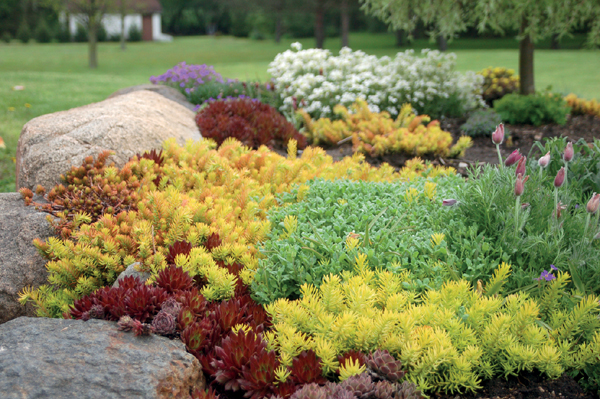
Few plants can compete with sedums for sheer range of colors and versatility, not to mention beauty.
Next page
